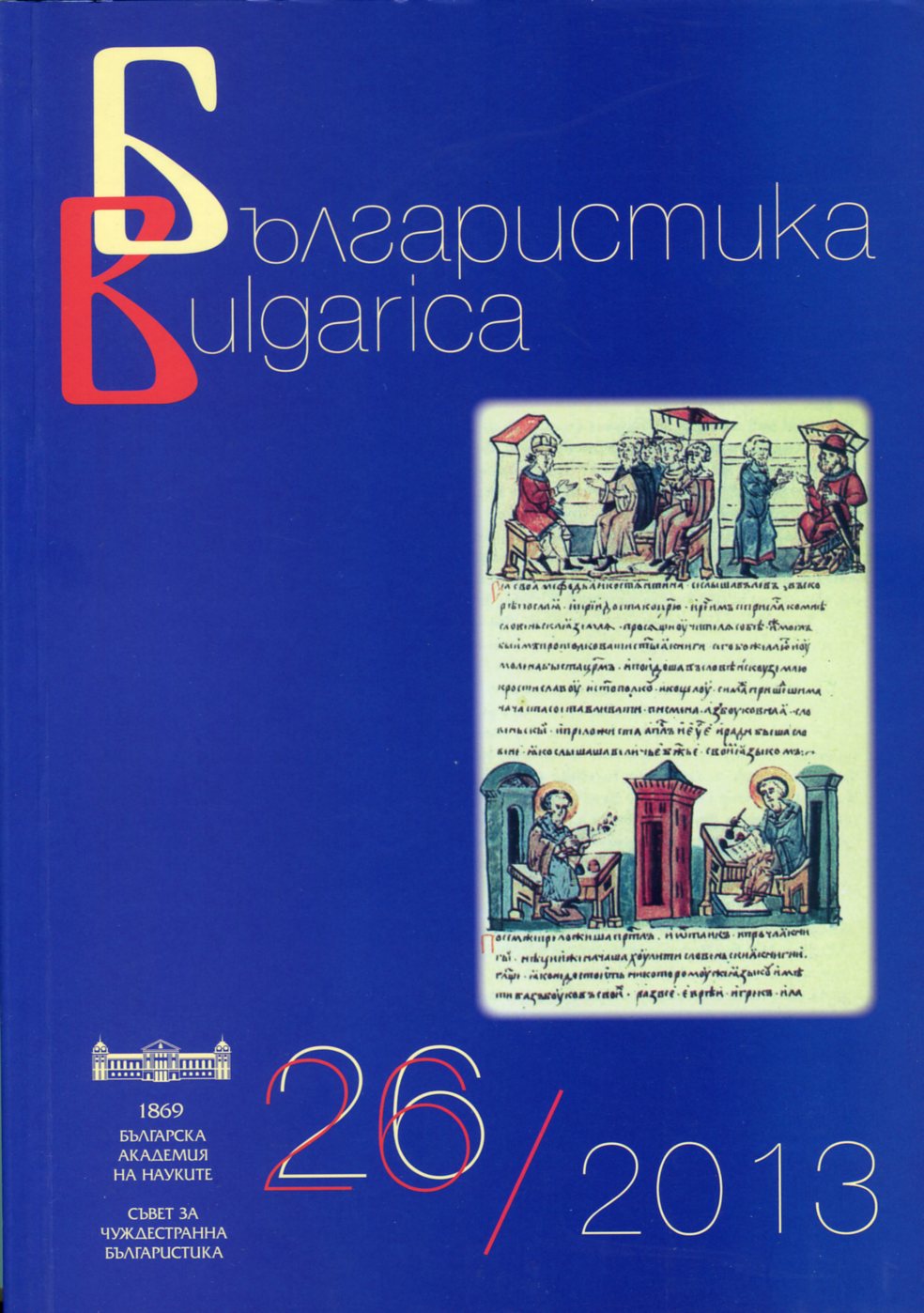
Книги 2012–2013 г.
Selected bibliography in the field of Bulgarian Studies published in the current year.
More...We kindly inform you that, as long as the subject affiliation of our 300.000+ articles is in progress, you might get unsufficient or no results on your third level or second level search. In this case, please broaden your search criteria.

Selected bibliography in the field of Bulgarian Studies published in the current year.
More...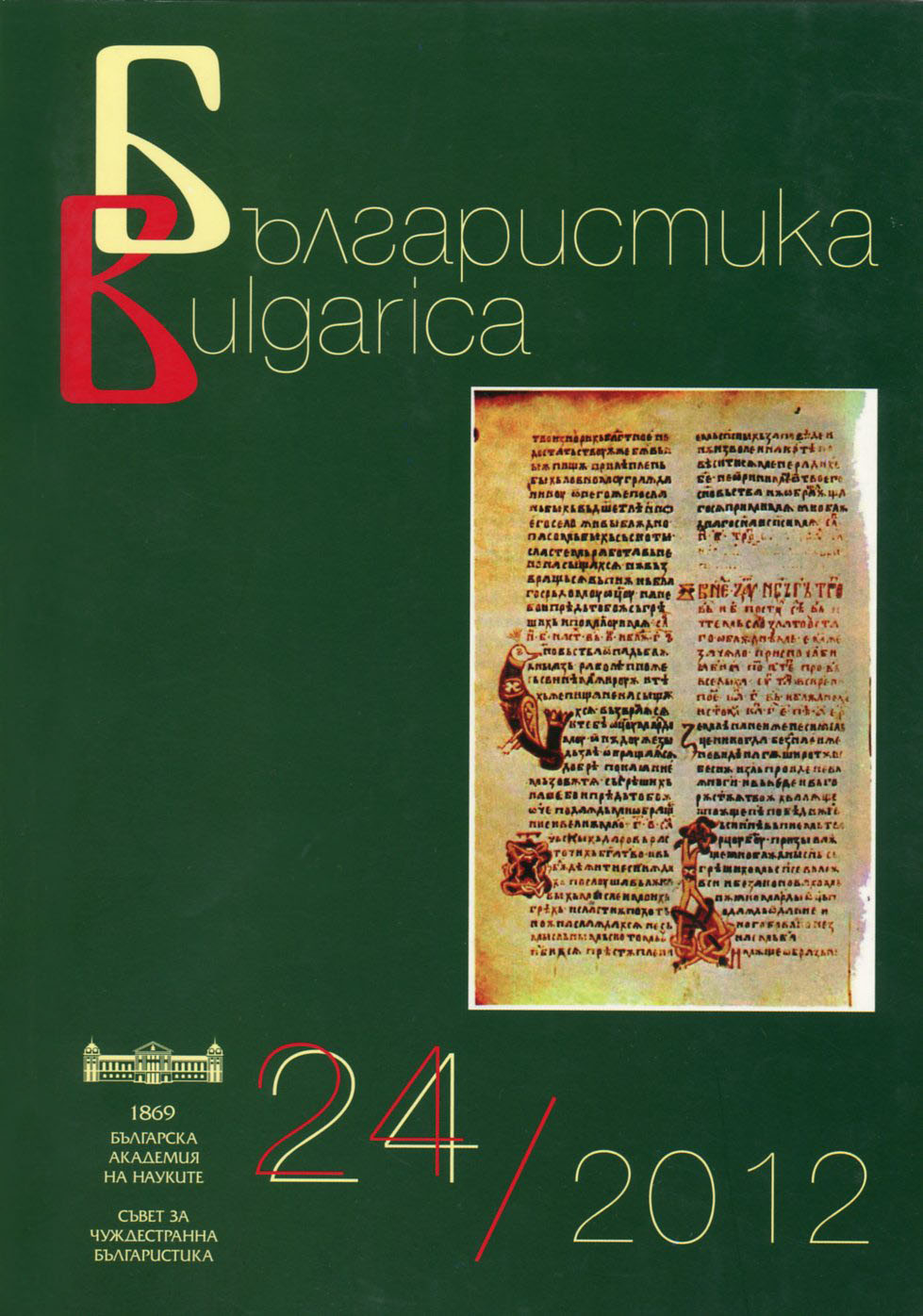
Selected bibliography in the field of Bulgarian Studies published in the current year
More...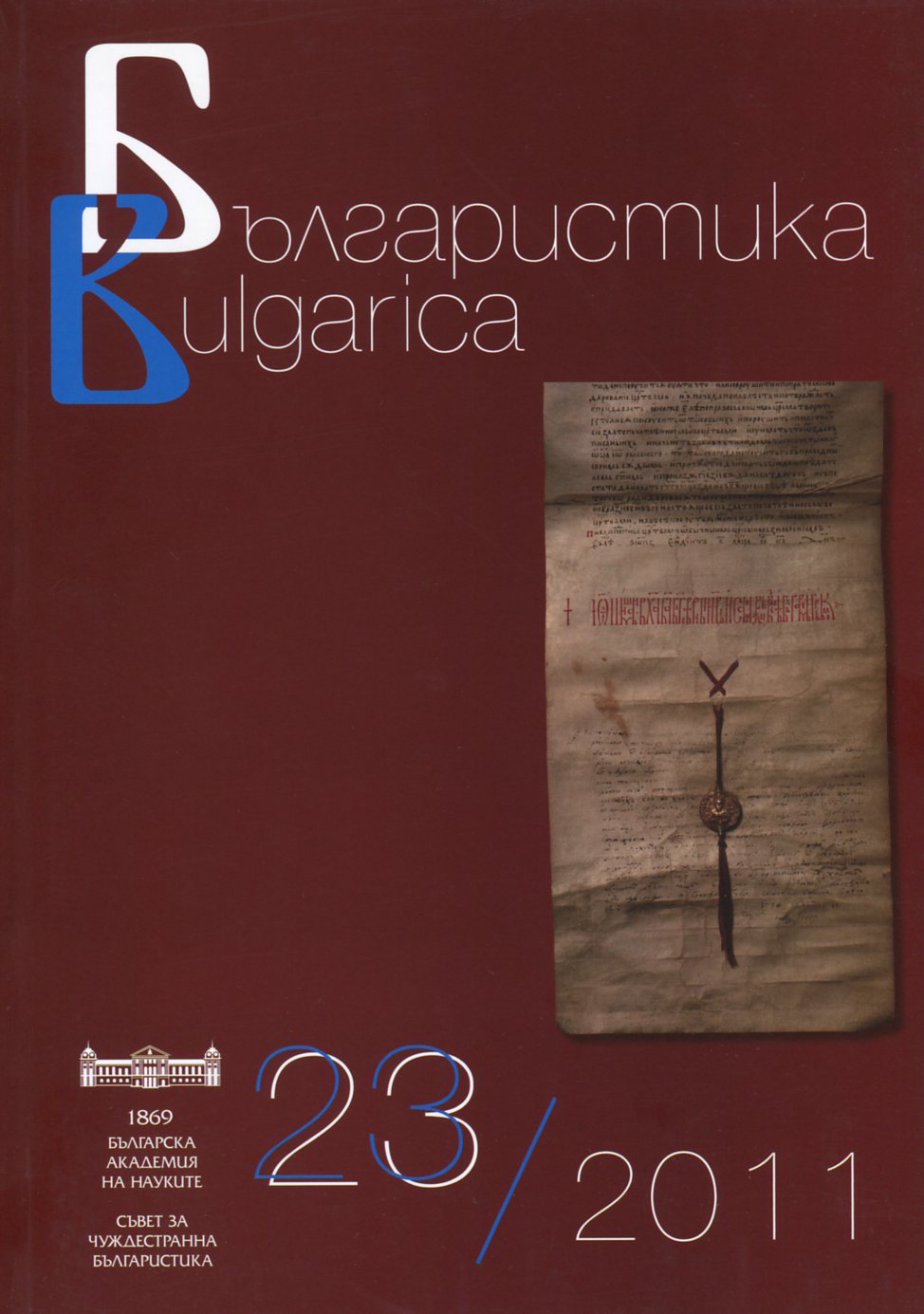
Selected bibliography in the field of Bulgarian Studies published in the current year
More...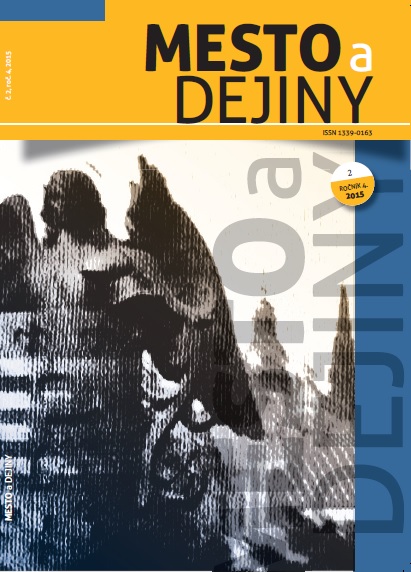
The theme of this study is to look through, identify and describe the circumstances that led to formation of the scientific knowledge of the geographical identification of flows of some rivers in Slovakia in the Middle Ages. The result is a recognition that to the lower, middle and upper streams of the rivers got the same name - hydronym. In the 13th-14th century settlers founded in the valleys of lower, but mainly in the upper parts of some rivers new villages, named by traditional names of the rivers. It happened at different times and in different locality, as in the case of Nitra, Važec, Hronec, Poprad, Torysa, Ondavka and other settlements. In the study we pay attention to group of the biggest rivers in Slovakia.
More...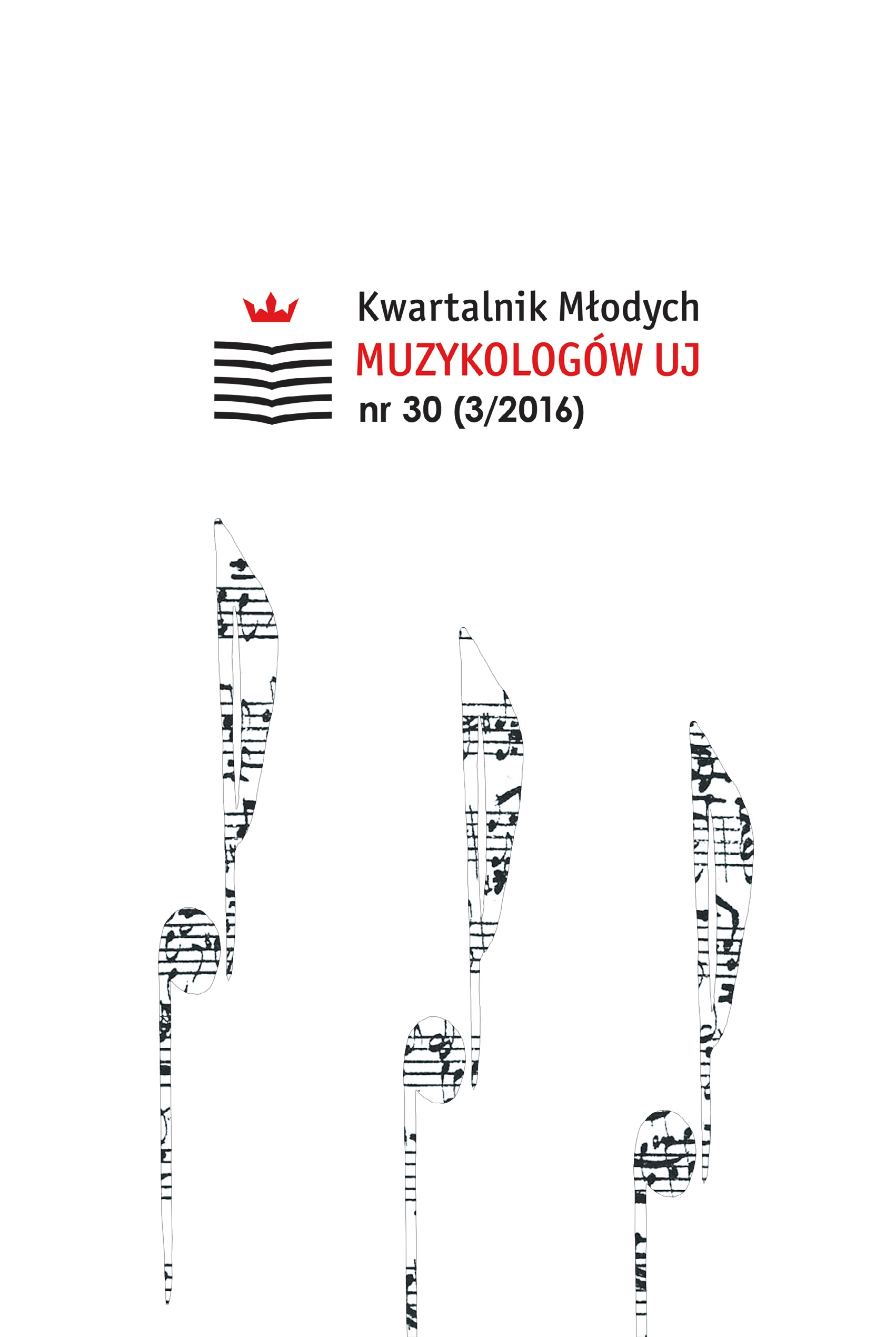
The pioneer of abstraction, Wassily Kandinsky (Васи́лий Васи́льевичКанди́нский, 1866–1944), used musical terms as titles for his paintingswith intention to release them from the themes, considering that musicis “the art which has devoted itself not to the reproduction of naturalphenomena, but rather to the expression of the artist’s soul, in musicalsound”. Through his paintings Kandinsky rethought the principles ofmusic. Not a painting, but an another artistic creation, through whichwe are given a chance to cognize Kandinsky’s comprehension of music,is The Yellow Sound (Der gelbe Klang, 1912), a “composition” for stage.It is the paradigm of Kandinsky’s “true stage-composition”, his totallynew view of theatre that consists of three elements – musical movement,pictorial movement, and physical movement, but interwoventogether in harmony that will trigger inner harmony in a spectator.Music for his scenario was provided by the composer Thomas vonHartmann (Фома́ Алекса́ндрович Га́ртман, 1886–1956), and anothermusical version was written by Alfred Schnittke (Альфре́д Га́рриевичШни́тке, 1934–1998 / Der gelbe Klang, 1974). In Concerning the Spiritualin Art Kandinsky presented his theory of colour through which he explainedhis own (synesthetic) view of yellow colour / sound, particularlyin comparison with blue colour, that was “musicalized” through TheYellow Sound. What kind of yellow and blue tone Kandinsky had inmind, and what nuances of these colours did von Hartmann / Schnittkesee / hear? What musical instrument(s) can produce yellow, i.e. bluecolour? Which music scale / tone / interval has yellow / blue tone(s)?Are we able to perceive all the shades of yellow / blue sound?
More...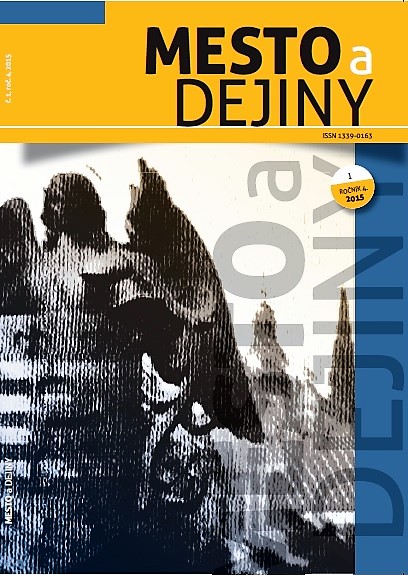
There are testaments from the 16th century preserved in Kremnica state archive. They are written in Latin, German and in one sample also in Slovak language. Last wills prepared a man for a death in spiritual and secular (division of property) way. Testaments eliminated conflict between secular property and desire for an eternal life. Formally testaments consist of several parts – invocation, intitulation, profession of faith, passages about human mortality, composing of the last will and redress of sins, heritages of property, confirmation, corroborating and date formulas. The content of the testaments is an important historical source for economic, law, culture, regional history and also history of material culture and everyday life.
More...
The aim of the article is to reconstruct the image of the town of Košice produced by members of Slovak historiography, and by Czech historians working in Slovakia in the period of existence of the First Czechoslovak Republic 1918 – 1938. The article focuses on answering the questions: how was the „magyarized“ image of the town „slovakized“ by Czechoslovak historians, how they refl ected on the pre-Trianon Magyarization of the town, how they referred to importance of Košice in the Hungarian nation narrative; which processes and events in the history of Košice were emphasised, and which were obeyed. The article deals with variety of strategies in picturing the town and in reinterpretation of the respective historical events in its history. It also attempts to evaluate what role Košice played in the constructed Czechoslovak national discourse. Finally, the article aims to explain reasons, why Košice in the inter-war period, despite becoming a strategic metropolitan hub of East Slovakia, was left in the peripheral position in the context of the Slovak national narrative.
More...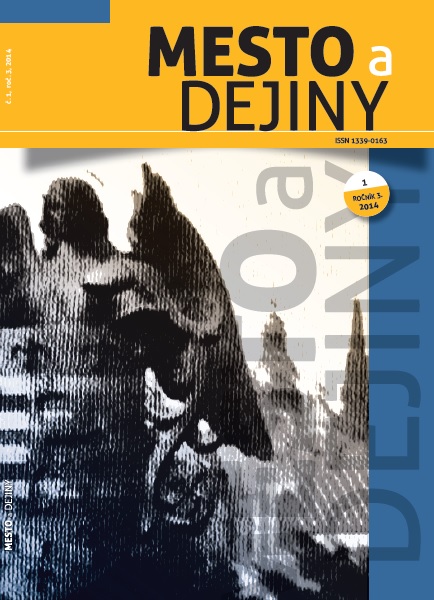
This paper describes the political and other influences on the foundation of the University of Košice in 1657. The surprising hesitation of the Hungarian king Leopold I and the Jesuits in Vienna in particular leads to some probable interpretations. The contemporary speculations within the Austrian Society of Jesus regarding the partition of the province in two parts and establishment of an autonomous Hungarian province are in the centre of attention.
More...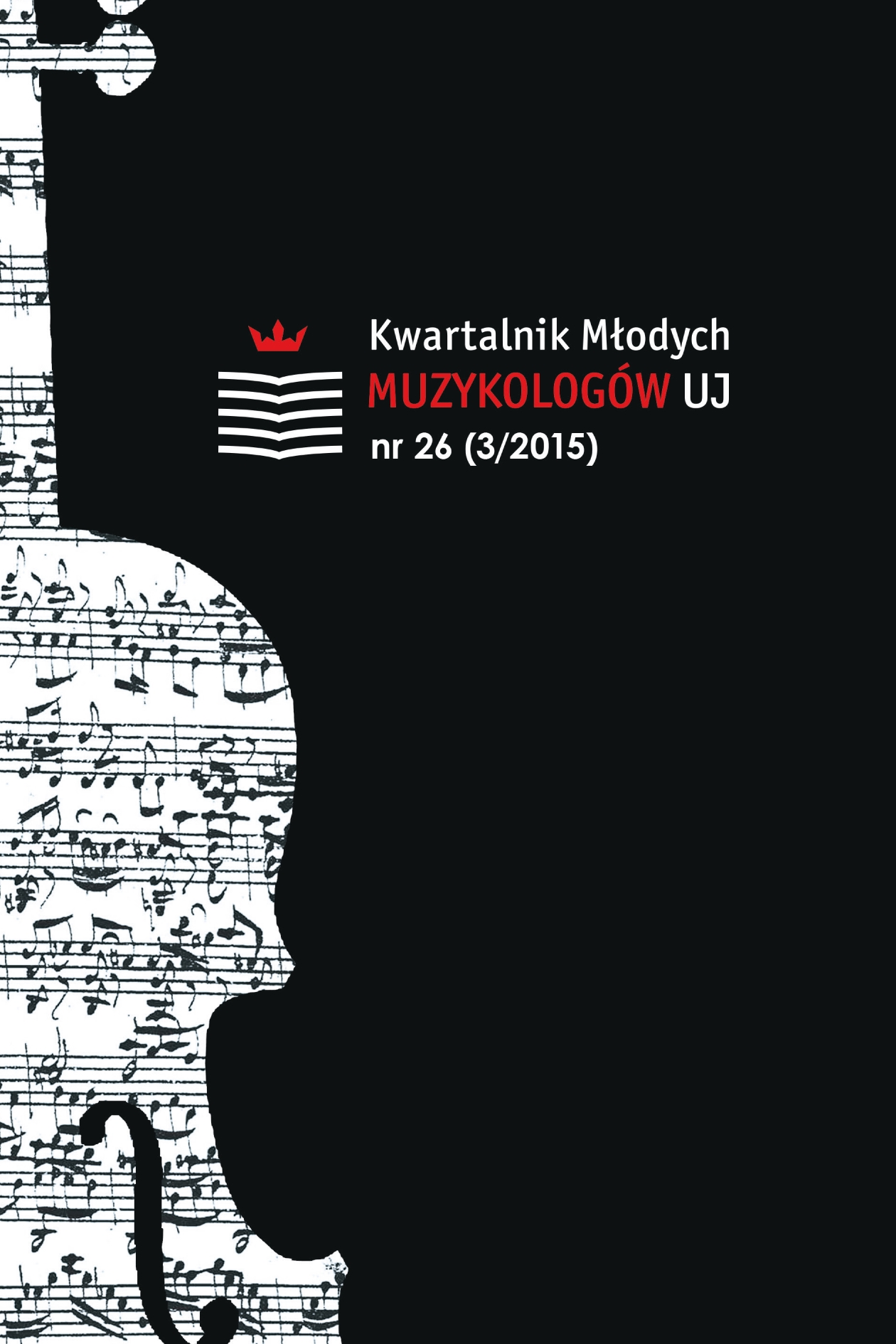
Ludwik Maader (also quoted in sources as Lodovico or Ludovico Maader) was a composer working on Polish territory in the second half of the 18th century. He came to Jasna Góra in September 1784. He was a bandmaster until the end of 1798. Information about his life and activities is rudimentary. We know that he came to Poland from Moravia, specifically from Dub on Moravou – a small town near Olo - mouc, but unfortunately we do not know exactly his earlier activity. Requiem in Es by Ludwik Maader is preserved not only in the Ar - chives of Jasna Góra in the manuscript signed III-446. Currently we found out about four other Requiem. The source from Jasna Góra is autograph of the bandmaster and contains probably the oldest and original version of the composition. The first source is kept in the Jagiellonian Library, comes from Gidle, and was written in 1809. The second manuscript is located in the Provincial Archives of Dominican Order in Cracow and belonged to Dominican’s band in Gidle (1845). The third and fourth sources are inaccessible because of poor state of preservation. They are stored in two places: 1) Archives of the Arch - diocese of Gniezno signature II/7, belonged to the band from Grodzisk Wielkopolski, 2) Archives of the Archdiocese of Poznań – from the band in Gostyń. This article is focused on a comparison of the three manuscripts: one from Jasna Góra and two from Gidle. The author compared the content of manuscripts, the way of signing the text, vocal and instrumental parts and basso continuo.
More...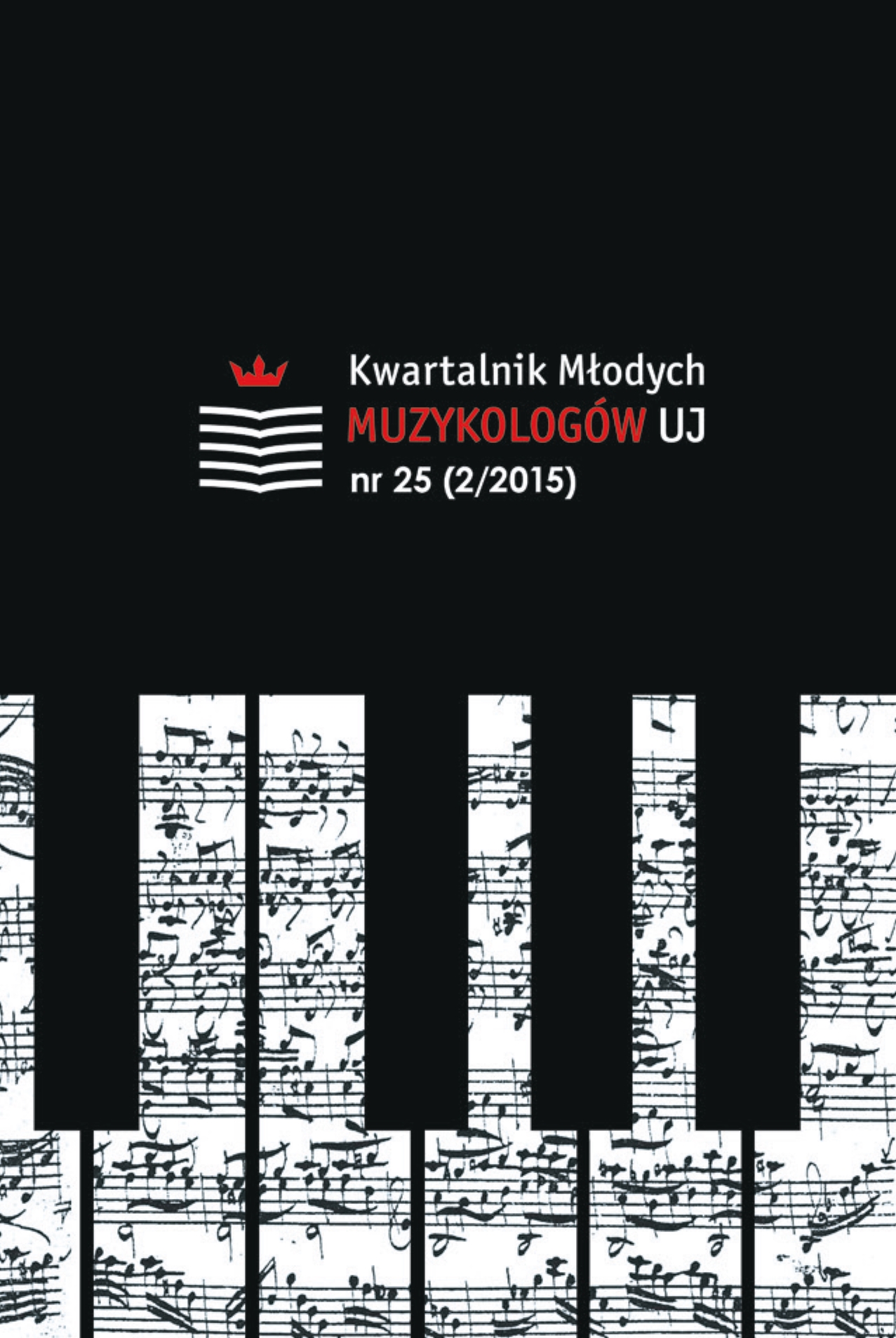
The article is a contribution to the exploration of history of Polish musical culture of the Renaissance and the Baroque period. Recognition of elementary forms of social organisation leads to understanding of the prevailing social and economical relations in those times. This article is one of the first in this topic, therefore it starts with very basic issues. A musicians guild existed in Cracow from 16th to 18th century. The article presents its history and organisation on the basis of statutes and municipal documents analysis. Simultaneously, it raises questions about circumstances of its creation and termination, welded duties and repertoire. The author questions the character of discussed association, considering to what extent it was a guild and a confraternity. The aim of the publication is to present to the reader a coherent picture of the guild, which could provide a starting point for further research.
More...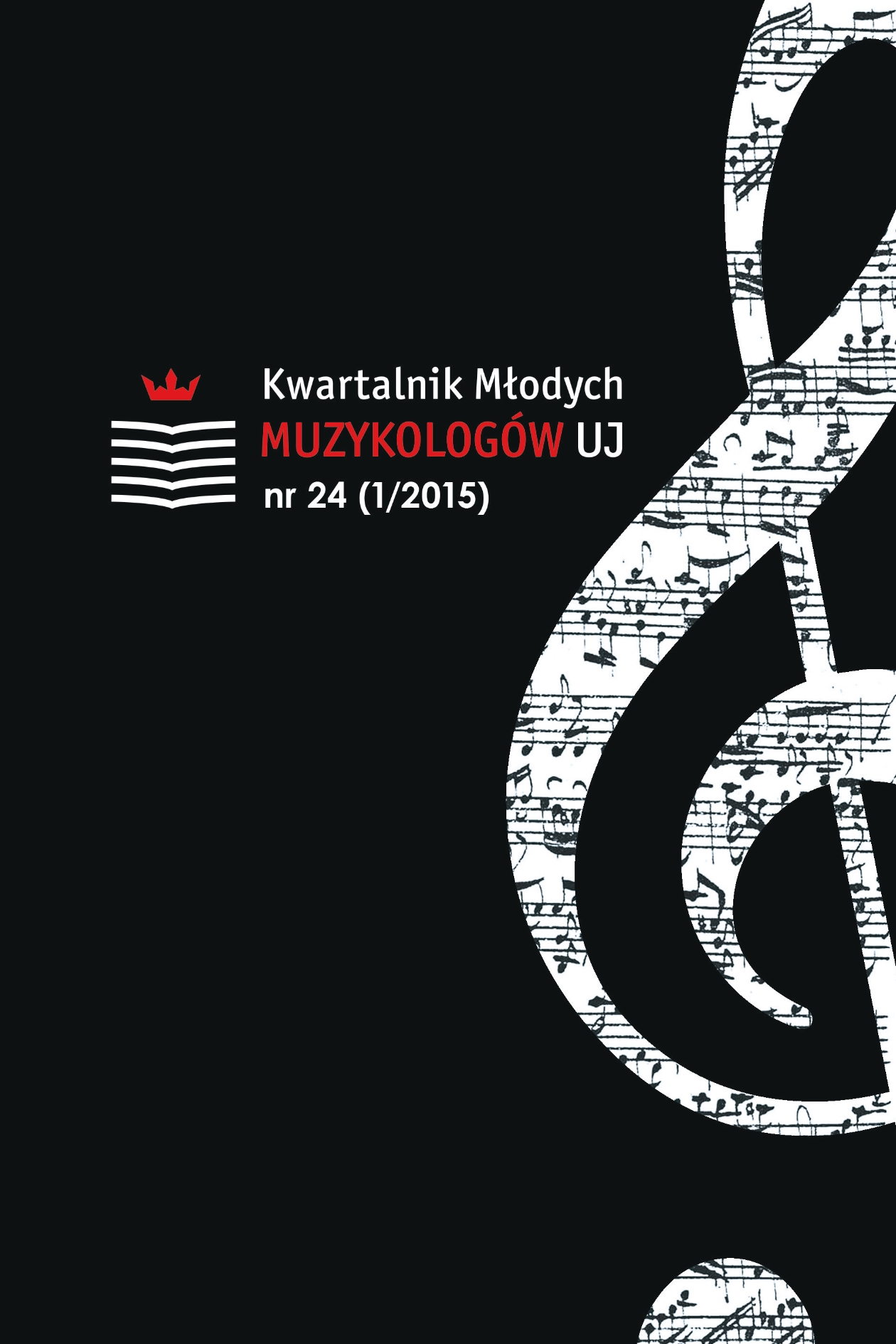
Most musicians working at the royal and aristocratic courts enjoyed good status despite the difficult political and economic situation of the Polish Common Wealth in the late 16th and 17th centuries. The height of the status of court musicians depended among others on their place of employment, origin, sex, professional roles and musical specialty. This article focuses on the relationship between the status of the musicians and their origin, sex, workplace and salaries. We compared court musicians’ salaries to demonstrate differences in their material status. The few preserved information about the salaries of the Polish court musicians was analyzed in this study. These were wages of the royal musicians and wages of the musicians employed at the courts of Leon Lew Sapieha, Zamoyscy, prince Dominik Ostrogski-Zasławski and hetman Adam Mikołaj Sieniawski. The results are presented descriptively and in the table and graph.
More...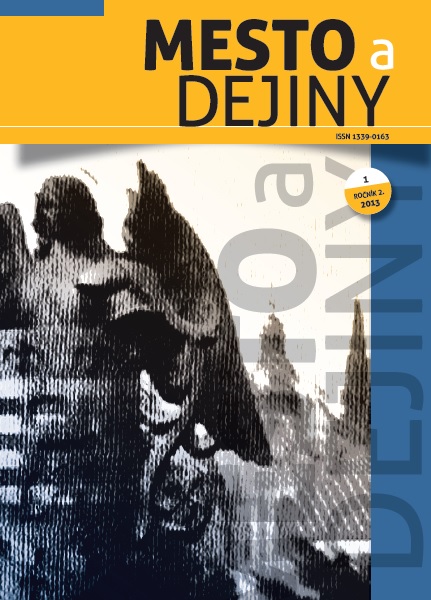
The article points out the insufficient research of the Roma people’s history in Košice. It suggests mechanic and incorrect acceptation of Roma people’s Camp locality which have neither been questioned nor verified yet. The article tries to indicate the problems of the topic de facto from the Middle Ages and problems with the distinction of the places where Roma people were settling in particular periods of their development in the suburbs. There is an urgency of consistent research of the archival material and other sources of information which are associated with this important topic.
More...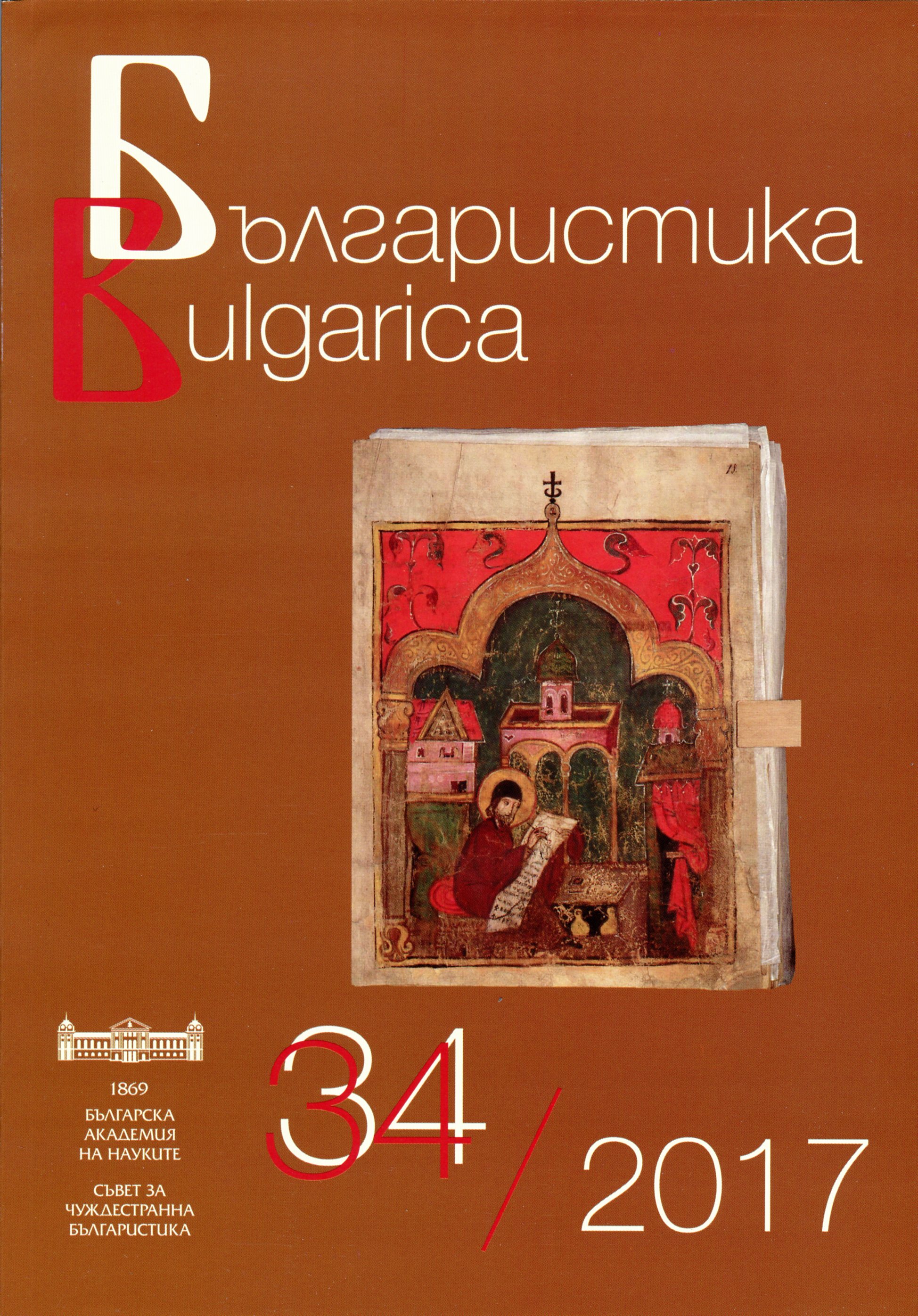
Selected bibliography in the field of Bulgarian Studies published in the current year
More...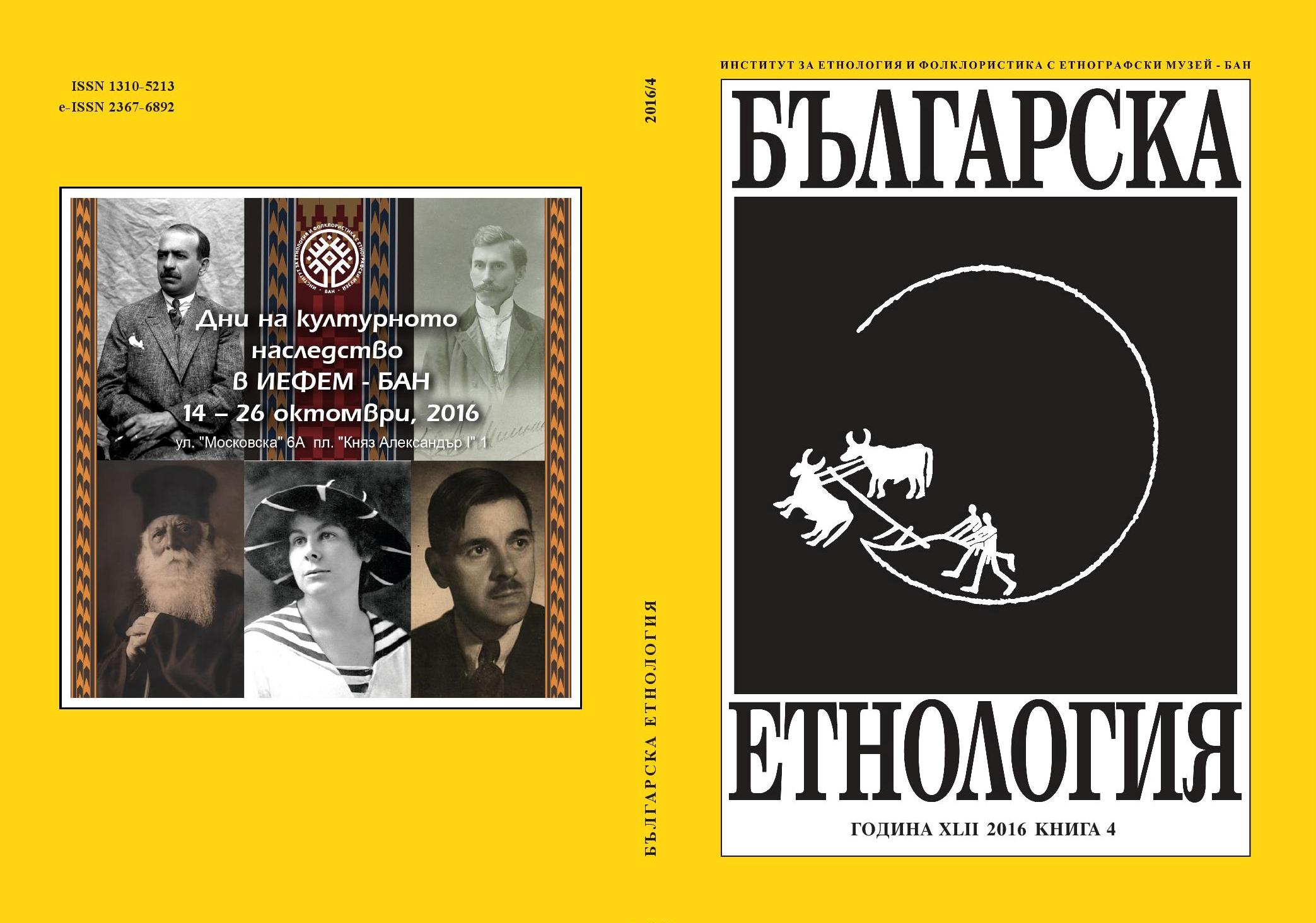
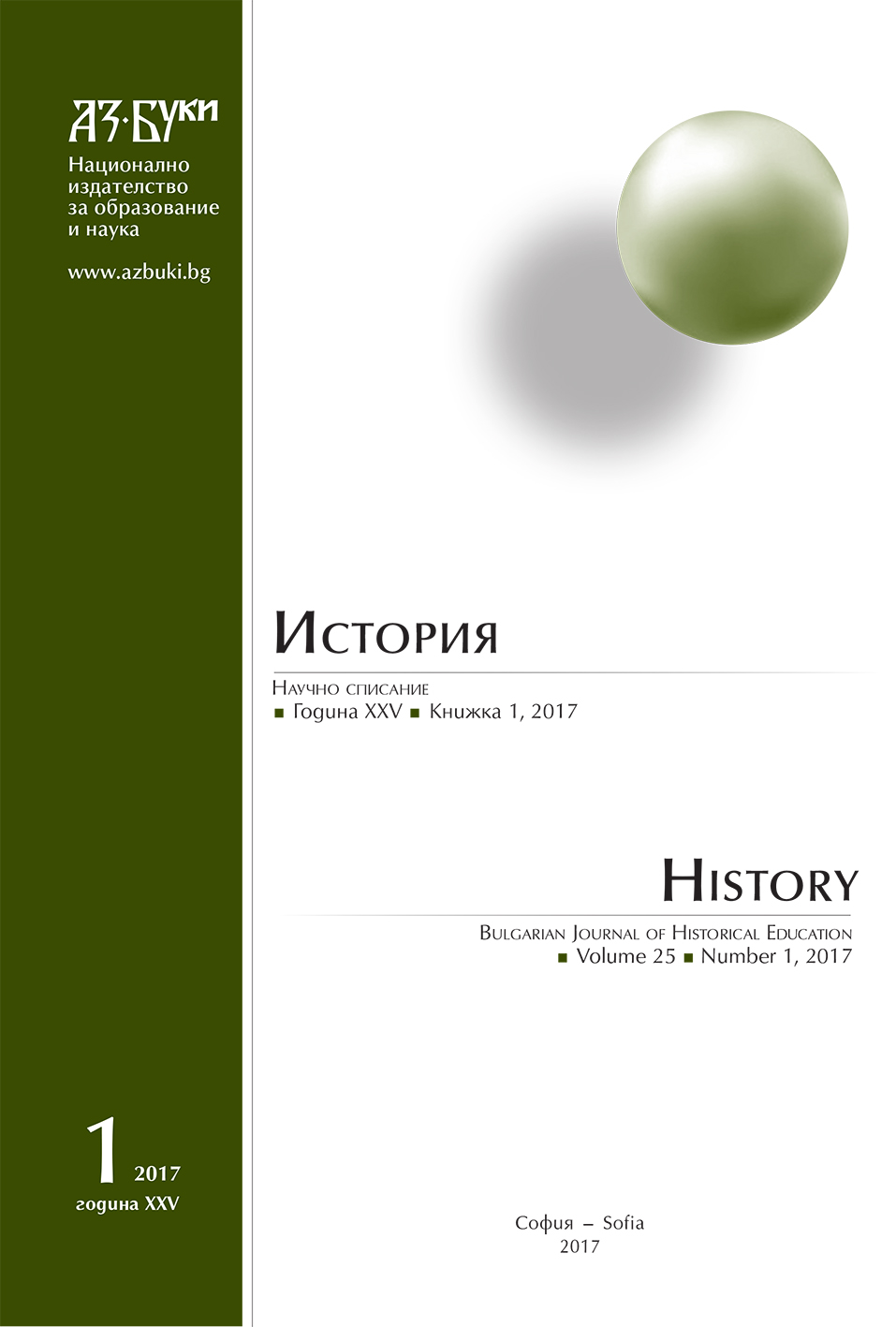
This article aims to trace the migratory movements of Bulgarian population from the Western Outlands to Bulgaria from the Spring of 1941, when as a result of the accession of Bulgaria to the Tripartite Pact, the country regain some of the ethnic Bulgarian territories lost during the Balkan wars (1912 – 1913) and World War I (1915 – 1918). The main factors that determine the migration process are outlined: economic and financial difficulties; voluntary labor migrations; forced economic mobilization and others
More...
The French Republic supported the spread of republican principles in Europe, but most of these sister republics became a means of controlling occupied lands through a mix of French and local power as client states. This article aims to analyze the outcome of the revolutionary triennium (1796 – 1799), when as a result of the French conquest of the peninsula some republics were established.
More...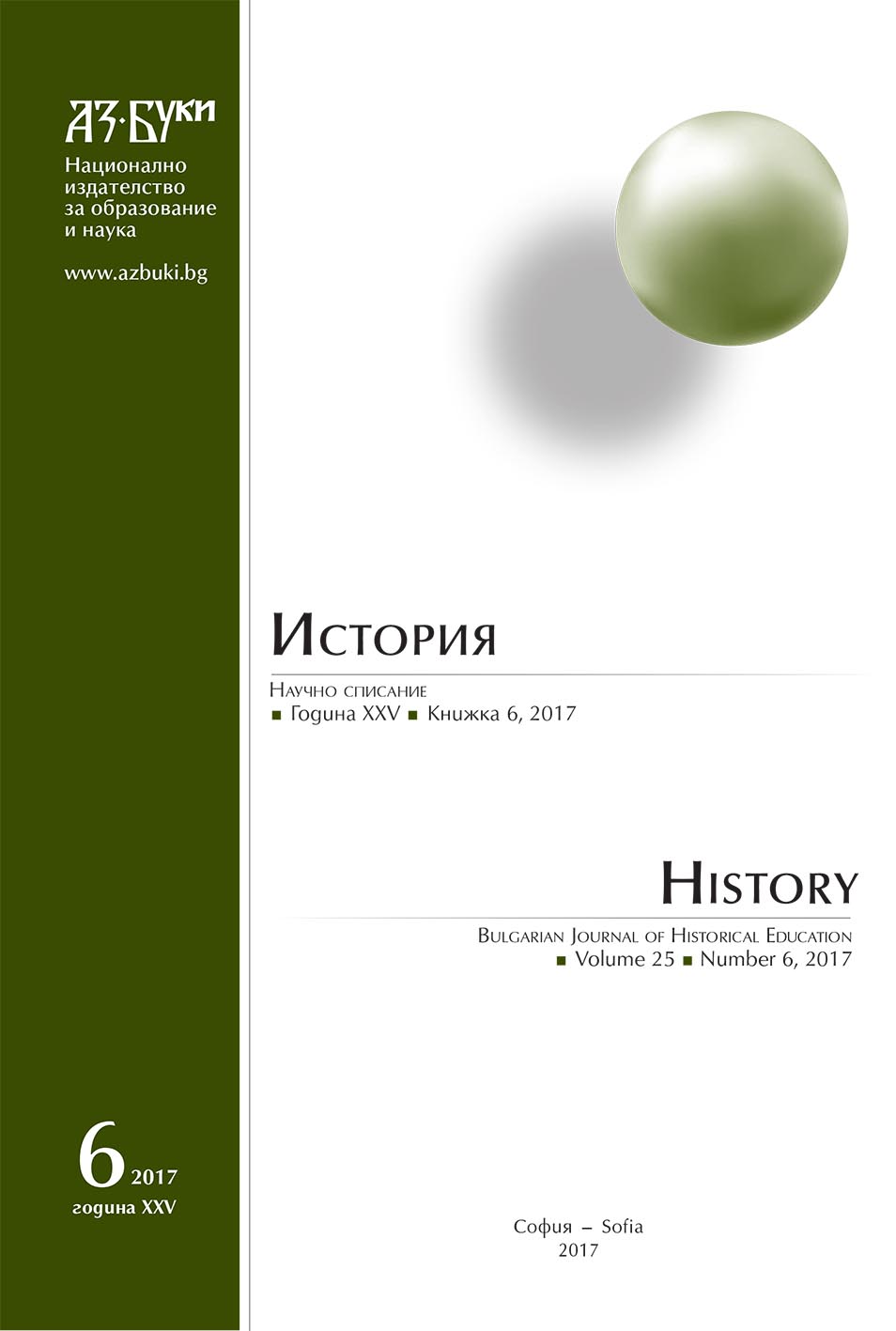
Although belonging to the corporate tradition of the Ottoman Empire, the relationship between patrons and clients continue to play a role in modern Balkan countries. This article presents and analyzes examples of this vertical type of social networks in order to explain some peculiarities of the way in which Bulgarian politics operates in the late nineteenth century.
More...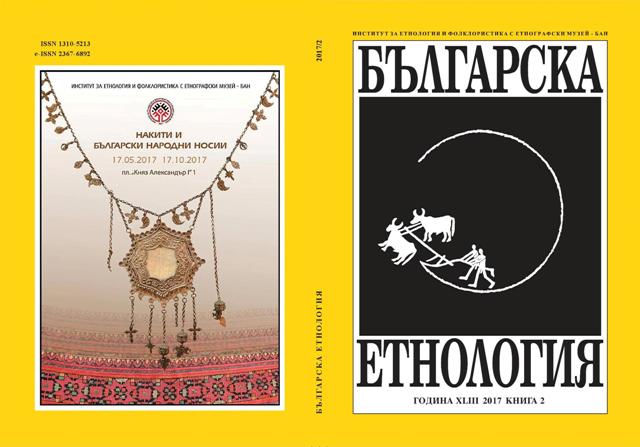
In the last years, the “Roma topic” attracts an increasing interest and takes a fopemost place in the public sphere of united Europe; hence, the Roma policies become a significant challenge on national and European level. Before analyzing the contemporary political discourses about the integration and the social inclusion of Roma, however, it is obligatory to know very well the previously existing state policies toward the Gypsies from the time of their arrival in Europe in the Middle Ages until today. Since a great number of the Roma population continues to live in the countries of Eastern Europe, the policies of the states which formed the “socialist camp” after World War II are very important. The analysis of the existing main political discourses about the Gypsies/Roma (and mostly of their results) should be the basis for the analysis of the contemporary national and European discourses about the Roma policies. Based on this, the achievements and the failures of those policies may find explanation and some prognoses about their results (or the lack of such) could be made.
More...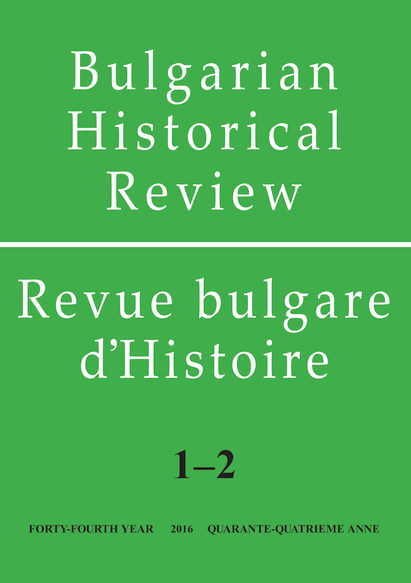
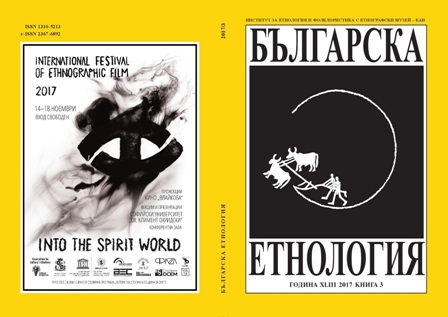
This research deals with two topics concerning mixed parentage rearing practices in Bulgaria. On the one hand, it is the naming the offspring with regard to the name giver(s) and principles of name-choosing, deriving from parent(s)’ cultural heritage and affected (or not) by the living-in social environment. On the other hand, there is the matter of the non-Bulgarian language acquisition, whose development is a question of micro managing of each of the families (and in many cases of each of the partners). Parents’ decisions, regarding these topics, set the manner in which others look at the mixed offspring, as well as how the children accept themselves as bearers of two cultural backgrounds.
More...